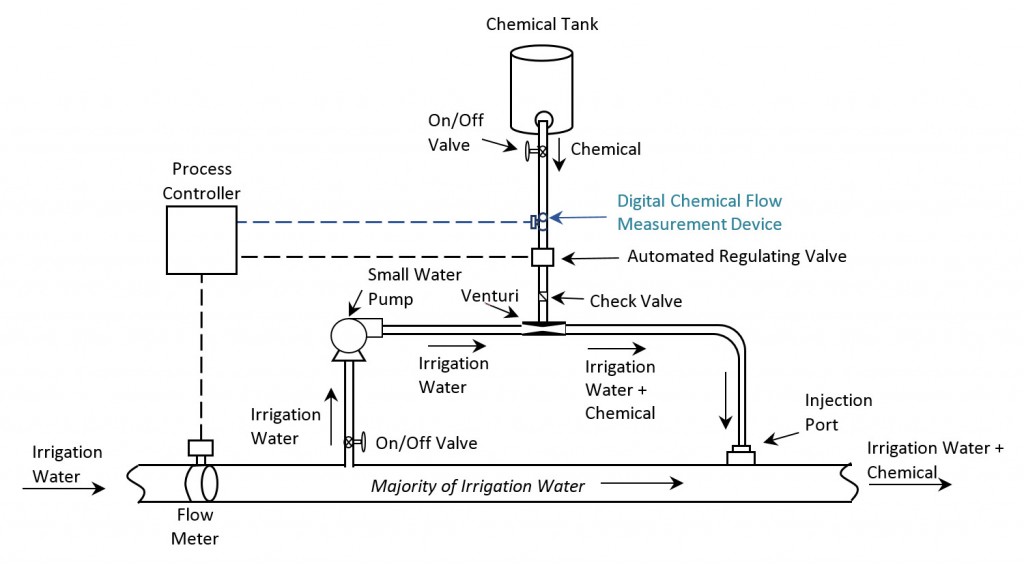Research Project: New Fertigation Book

Figure 4-9 in book. Example demonstration unit of a proportional injection unit with venturis, magnetic chemical flow meters, and modulated (meaning the opening is carefully adjusted, as opposed to pulsing) valves on the chemical line. The booster pump on the right-hand side pressurizes the water that flows through the venturis.
Status: Last year of a two year study
Issue: There are many fertilizer publications and research papers. However, few of these resources focus on pragmatic chemical applications via irrigation water – especially in light of special California drought conditions. An older publication of FERTIGATION has been an extremely important reference for practitioners in California. But it is over 20 years old and was written at a time when fertigation was in its relative infancy, when organic farming was scarce, and when environmental regulations related to fertilizers were few. Equipment and chemicals have both changed, as well as management practices. The new FERTIGATION book will provide a valuable update that will hopefully serve California well for another 20 years.
Methods/Locations: The first step is an evaluation of the previous version and an analysis of necessary updates. This process is augmented by literature searches and interviews with practitioners (growers, researchers, fertigation equipment companies, etc.) to fill in missing or outdated sections. The resulting information will be edited and the book will be published electronically.
Main Findings: The book will cover typical subjects such as commercial fertilizer properties, injection equipment, solubility, crop nutrient uptake patterns (lb. vs. stage of growth), achieving good distribution uniformity with different irrigation methods, chemical maintenance of drip systems, and water amendments to improve infiltration rates. It will also cover special topics such as: a discussion of the A/R nitrogen ratio adopted by the Regional Water Quality Control Board, biostimulants, organic farming fertilizers, proportional dosing, new hardware, and oxygen injection in water.
Potential Impact: This publication will assist growers in meeting regulatory requirements, now and in the future. A combination of good water and fertilizer management will increase production and possibly decrease expenses.

Figure 4-10 in book. Control type #3 with the important addition of an accurate chemical flow meter providing a feedback loop to the process controller.
Full Project Report: https://www.cdfa.ca.gov/is/docs/15-0393-Burt.pdf


